our story
Telecom Fiji has a long and proud history.
Over the years, technological advancement has significantly changed the way we do business and expanded the range of services we offer. What hasn’t changed is our commitment to keep Fiji connected – this remains at the heart of everything we do.
OUR JOURNEY
Our history forms the foundation for the successful business we are today. There have been many significant milestones along our journey – together, they tell our story.
-
1900
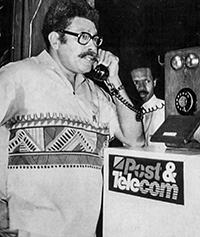
The transfer of the business of the Department of Posts & Telecommunications to the new Company, FPTL (Fiji Posts & Telecommunication Limited) occurred on January 1, 1900.
-
1904
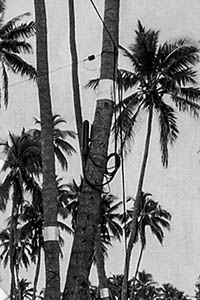 A line was built between Suva and Levuka. It followed an over-head pole route from Suva to Lodoni and then by submarine cable to Levuka. The line was originally installed as telephone by morse.
A line was built between Suva and Levuka. It followed an over-head pole route from Suva to Lodoni and then by submarine cable to Levuka. The line was originally installed as telephone by morse. -
1911
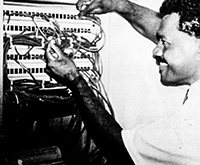 During the very early days of communication, Fiji had the distinction of leading in the field of radio in the South Pacific by having the first commercial station south of the equator.
During the very early days of communication, Fiji had the distinction of leading in the field of radio in the South Pacific by having the first commercial station south of the equator. -
1937
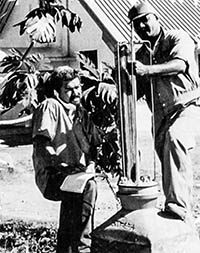 A further two overhead lines ran from Lautoka to Nadi where a 50-line exchange went into service. During this period, construction of the telephone pole route between Suva, Navua, Sigatoka and Nadi closely followed construction of the Suva-Lautoka road which was underway at the time.
A further two overhead lines ran from Lautoka to Nadi where a 50-line exchange went into service. During this period, construction of the telephone pole route between Suva, Navua, Sigatoka and Nadi closely followed construction of the Suva-Lautoka road which was underway at the time. -
1956
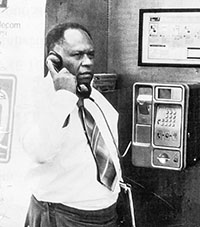 The heavily overloaded manual board was replaced with a stronger type automatic step-by-step exchange.
The heavily overloaded manual board was replaced with a stronger type automatic step-by-step exchange. -
1960-1995
 In 1963 a manual telex exchange was opened with four subscribers and the Suva-Lautoka microwave link was brought into service at the end of 1965.
In 1963 a manual telex exchange was opened with four subscribers and the Suva-Lautoka microwave link was brought into service at the end of 1965.In 1983, a 600-line automatic crossbar exchange went into service at Tavua.
Seaqaqa received a manual system the same year.
Extension of automatic exchanges at Suva, Lami and Nausori were carried out during the year increasing their capacities by 2000, 1000 lines respectively.
Installation of the first AXE 103 type exchange began at Lautoka in July 1985 and it went into services early the following year.
Fiji Posts & Telecommunication Limited, a private limited liability company was formed on August 18, 1989.
In 1994, a joint venture between FPTL and Vodafone Fiji commenced cellular operations in Fiji, reaching the number of 3000 plus customer by mid-1996.
By the end of the 1995 the urban telecommunication network was fully digested.
-
1996

1996 marked the introduction of STD (Subscriber Trunk Dialling) and of crossbar switching equipment into the Fiji Telephone Network.
Mid-1996, telecommunications development included rapidly expanding the network, increasing ISD penetration and providing value added services.
-
2004
Fiji goes broadband

Telecom Fiji chose Canadian SR Telecom to supply its symmetry broadband fixed wireless access (BFWA) solution to bring high speed internet services to certain areas of the country. The new 3.5GHZ OFDMA-based system was WiMAX-ready, allowing it to evolve as WiMAX standards developed.
-
2007
Fijian government rubber stamps new VoIP policy
A new approved voice-over-internet protocol (VoIP) policy which will allow the provision of IP telephony services in the country was approved by the Fijian Cabinet Communication minister Taito Waradi. The liberalisation of the VoIP segment unlocked the potential of the nation’s telecoms infrastructure and helped promote the proliferation of broadband internet services.
-
2007

Telecom Fiji invested USD33 million in its next generation network (NGN) to provide high speed data services to the country’s entire business community.
-
2008
Telecom Fiji overhauls IT systems
Telecom Fiji signed a USD7.6 million deal with Indian IT firm Tech Mahindra to replace its IT systems, billing systems and study the possibility of outsourcing its billing requirements to other telecom carriers.
-
2009
Telecom Fiji selected Gilat Satellite Networks to deploy its SkyAbis cellular-backhaul solution on its satellite communications network to enhance its fixed-wireless service. Remote islands were now able to receive high-quality voice and data services similar to those offered in the rest of Fiji.
-
2009
Telecom Fiji inks preliminary interconnect deal with Digicel
Mobile start-up Digicel Fiji, which launched a USD70 million GSM network in September 2008 to break the monopoly held by Vodafone, signed an interim interconnection agreement with Telecom Fiji enabling Digicel customers to make calls to landlines at reduced rates.
-
2010

Telecom Fiji unveils its FJD40 million (USD20.6 million) Next Generation Network (NGN) in Fiji, replacing the obsolete telephone exchange in Suva with further added investment of FJD20 million being scheduled to develop NGN in western Viti Levu and the Northern Division. The platform allows Telecom Fiji the competitive advantage of quadruple services of telephone, internet, IPTV and video via one single line, enabling high speed links with download speeds ranging from 2Mbps to 52Mbps.
-
2010
Fiji becomes a telecommunications hub in the Asia-Pacific region after opening up access to the Southern Cross Cable, with Telecom Fiji ending the ten-year monopoly of the country’s international services provider Fiji International Telecommunications Limited (FINTEL) on the cable, which provides the fastest, most direct, and most secure international internet access bandwidth available to the island.
-
2011
Telecom Fiji awarded a contract to wireless transmission solutions provider Aviat Networks for the supply of the vendor’s WTM 6000 all-IP trunking microwave radios, enabling Aviat Networks to design radio paths and install a high-capacity network to link the main islands of Viti Levu and Vanua Levu.
Telecom Fiji started offering international data services thanks to the recent opening up of the international gateway, allowing it direct access to the Southern Cross Cable network enabling Telecom Fiji to arrange for end-to-end service with offshore international service providers.
-
2014

Telecom Fiji launches a new high-speed data service in Suva, as it marked the company’s latest efforts to establish itself as a major data service player in the country. Launching ‘Connect Infinity’ TFL chairman spoke that the battle for the best internet service provider (ISP) in Fiji could only be won by having the appropriate telecoms infrastructure and technical innovation to fulfil customer expectations.
-
2015

Telecom Fiji Limited (TFL) announced phases of its ‘Connect Public Wi-Fi’ project. At the time, the coverage extended to the Central and Western Divisions, with added deployed sites on a ripple strategy under the first wave, extending coverage to include a number of key public hotspots in parks, bus stations, shopping malls, banks and hospitals. In addition, TFL deployed nearly 200 hotspots in a number of leading hotels across Fiji.
-
2016
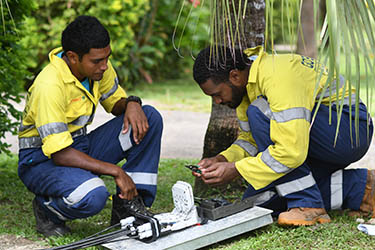
Telecom Fiji rolled out Next Generation Network (NGN) to bring fibre-optic broadband services closer to homes and business across the nation, providing reliable and premium connectivity, with some of the fastest internet download and upload speeds in the region giving customer more opportunities also on the successful completion of TD-LTE technology for its Connect 4G+ wireless broadband unit complementing on fibre-optic rollout.
-
2016
Telecom Fiji confirmed signing of a memorandum of understanding (MoU) with Denarau Corporation to roll out fibre-to-the-home (FTTH) and VDSL technology for residential customers on Denarau Island and Nadi. The deployment of super-fast broadband in these key tourist destinations forms part of TFL’s national broadband strategy which it focused on ensuring greater accessibility, availability and affordability of internet and high-speed broadband connectivity to the people and businesses across Fiji.
-
2016

Telecom Fiji launched its ‘Connect 4G+’ network across the country using APT700 spectrum in the 698MHz-806MHz band that allows it to leverage the improve coverage characteristics afforded by the lower frequencies. As the only company in the South Pacific region to use APT700 spectrum for TD-LTE, offering three times the coverage spread of the frequencies than offered by its competitors.
-
2019

Telecom Fiji officially became a Gold Partner of Oracle. This Gold-level membership now gives Telecom specialization to attract new business and enhance solutions for current customers.
